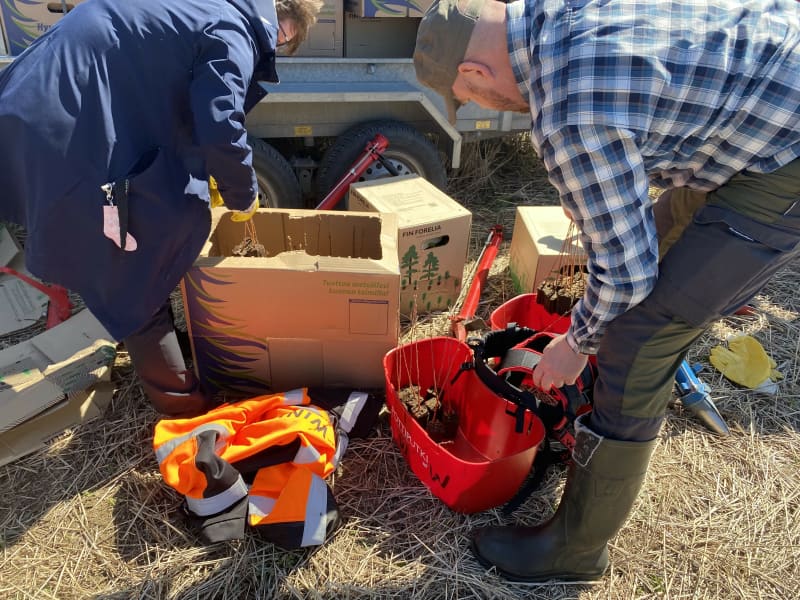Afforestation transforms a bushy field or a stripped peat bog into a carbon sink. In addition to carbon sinks, afforestation affects, among other things, the diversity of the environment and improves the quality of water bodies.
Dry and a little dusty in the spring sunshine, the open space on the edge of the Eurajoki settlement buzzes with people walking by with planter boxes on their hips.
The planting boxes contain mainly spruce and iron birch seedlings and some pine seedlings.
The spreading area during the construction of the 8th road and the nearby Metsäpelto are reforested with talco forces. In the future, there will be a mixed forest suitable for recreational use.
In addition to the project manager of the Vesikestävä project, students and teachers from WinNova’s forestry sector, members of the Forest Council of Southwest Finland and Metsäkeskus have come to plant tree seedlings.
Planting ensures success
An open spreading area is clean land, where planting is easy. The grassy patch in the middle of the forest has required the soil to be cultivated so that the seedlings have a better chance of growth.
– When it’s a grassy place like this, it’s not quite natural that the seed from the trees gets carried to it and starts to germinate, but it does require this planting, says Peltovirta.
The former field is always reforested by planting, because planted seedlings do better against weeds than those that start from seed.
Afforestation reduces the load on water bodies
By afforesting old open fields and wastelands, the state of water bodies is also affected. Trees consume nutrients from the ground and bind soil with their roots.
– With the plantings, it is possible to influence the water flows and reduce the solid matter loads, Peltovirta says.
Idle areas that are no longer used for agricultural cultivation are best suited for afforestation.
– Old peat production areas are also well suited for afforestation.

